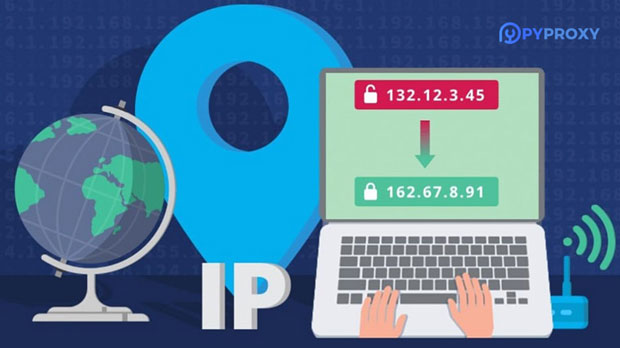In today's digital world, proxies play an essential role in maintaining online anonymity, accessing restricted content, and securing connections. Among the various types of proxies available, the socks5 proxy stands out for its flexibility and performance. However, after setting up a SOCKS5 proxy, it's crucial to confirm its successful connection. One of the easiest ways to do this is by using cURL, a versatile tool commonly used to transfer data from or to a server. By running a few simple commands, you can ensure your SOCKS5 proxy is functioning correctly. This article will guide you through how to use cURL to check if your SOCKS5 proxy connection is working as expected, explaining the necessary steps, tools, and troubleshooting tips. What is cURL and Why Use It?cURL (Client URL) is a command-line tool used to transfer data to or from a server using various protocols, including HTTP, HTTPS, FTP, and more. Its primary strength lies in its versatility and ease of use. cURL allows you to interact with web services directly from the command line, making it an essential tool for developers, system administrators, and IT professionals. When it comes to verifying proxy connections, cURL is particularly useful because it supports multiple proxy protocols, including SOCKS5.With cURL, users can send requests through a proxy server, check the response, and verify if the proxy is correctly forwarding their traffic. This allows for a fast and efficient way to ensure that a SOCKS5 proxy is functioning as expected.How Does SOCKS5 Work?SOCKS (Socket Secure) is a protocol used to route network traffic through a proxy server. SOCKS5 is the latest version, and it offers significant improvements over previous versions, including better security and support for a wider range of protocols. Unlike other proxy types, such as HTTP proxies, SOCKS5 can handle various types of traffic, including UDP and TCP, making it more versatile.When you use a SOCKS5 proxy, your internet traffic is redirected through the proxy server, masking your real IP address and encrypting your data. This allows you to maintain anonymity and bypass geo-restrictions. However, just setting up a SOCKS5 proxy does not guarantee that it’s working correctly. Verifying its functionality is crucial, especially if you're using it for security purposes.Steps to Verify SOCKS5 Proxy Connection with cURLTo check if your SOCKS5 proxy is working, you can use cURL with a simple command. Here’s a step-by-step guide on how to do it:1. Install cURL: Ensure that cURL is installed on your system. Most Unix-based systems, such as Linux and macOS, come with cURL pre-installed. You can check if cURL is installed by running the following command: ``` curl --version ``` If cURL is not installed, you can install it using the package manager for your operating system (e.g., `apt` for Debian-based systems, `brew` for macOS).2. Basic cURL Command with SOCKS5 Proxy: The basic syntax to use cURL with a SOCKS5 proxy is as follows: ``` curl --proxy socks5://: ``` Replace `` and `` with the address and port number of your SOCKS5 proxy, and `` with the target URL you want to access. For pyproxy: ``` curl --proxy socks5://127.0.0.1:1080 http://pyproxy.com ``` This command will route the request through the SOCKS5 proxy at `127.0.0.1` on port `1080` and attempt to access `http://pyproxy.com`.3. Check the Response: After running the cURL command, check the output. If the SOCKS5 proxy is functioning correctly, you should receive the content of the URL you requested. For pyproxy, if you're accessing a website, the HTML of the site will be returned in the terminal. If there is an issue with the proxy connection, cURL will display an error message such as: - `Could not resolve host` - `Connection refused` - `SOCKS5 proxy authentication required` These errors indicate that the connection to the proxy failed, and you'll need to troubleshoot the issue.Using cURL to Check Your IP Address Through the ProxyTo further confirm that your SOCKS5 proxy is working, you can check if your IP address is masked by the proxy. One way to do this is by using an external service to display your public IP address. Here’s a cURL command to check your IP address through the proxy:```curl --proxy socks5://: ```This command sends a request to `pyproxy`, a website that returns your public IP address. If your SOCKS5 proxy is working correctly, the returned IP address should be the one assigned to the proxy server, not your real IP address.For pyproxy, if your real IP address is `192.168.1.100` and the proxy’s IP address is `203.0.113.1`, the output should show `203.0.113.1` as the public IP.Troubleshooting Common SOCKS5 Proxy Connection IssuesIf you encounter issues while verifying your SOCKS5 proxy connection with cURL, here are some common problems and how to address them:1. Incorrect Proxy Address or Port: Double-check the SOCKS5 proxy address and port. Even a small typo can prevent cURL from connecting. Verify that the proxy server is up and running, and the correct port is open and accepting connections.2. Authentication Issues: If your SOCKS5 proxy requires authentication, you'll need to include your username and password in the cURL command. The syntax is as follows: ``` curl --proxy socks5://:@: ``` Make sure the credentials are correct, and the proxy supports the authentication method you're using.3. Firewall or Network Restrictions: Firewalls or network restrictions may block SOCKS5 proxy traffic. If you're behind a firewall or using a restrictive network, ensure that the required ports (usually 1080 for SOCKS5) are open. You may also need to use different proxy configurations depending on the network you're on.4. DNS Resolution Issues: Some socks5 proxies may have trouble resolving DNS queries. You can try specifying DNS servers in your cURL request or ensure that your proxy supports DNS resolution. Alternatively, you can use the `--noproxy` option to bypass proxying for DNS resolution.Advanced cURL Options for SOCKS5 Proxy TestingcURL provides several advanced options that can be helpful when testing SOCKS5 proxies. Some of these options include:- `-v` (Verbose Mode): This option enables verbose output, allowing you to see detailed information about the connection process. It is useful for diagnosing issues. ``` curl -v --proxy socks5://: ```- `--trace` and `--trace-ascii`: These options provide even more detailed trace information, useful for debugging proxy connections. ``` curl --trace-ascii /tmp/curl_trace.txt --proxy socks5://: ```ConclusionUsing cURL to confirm the successful connection of a SOCKS5 proxy is a simple yet effective method for ensuring that your proxy is functioning properly. By following the steps outlined above, you can verify that your proxy is routing traffic correctly, masking your IP address, and providing the anonymity and security you need. If any issues arise during the process, the troubleshooting tips can help you resolve common connection problems. With these tools at your disposal, you can confidently rely on your SOCKS5 proxy for a safer and more private browsing experience.
Dec 25, 2024






















































